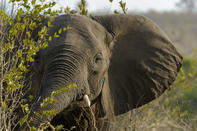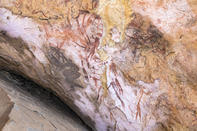African Wilderness Reborn

Private fences were knocked down, land restored, game relocated and ecological management efforts carefully undertaken. The initiative became the first in South Africa to translocate entire breeding herds of elephant. When all the farms were consolidated they took on the name of the original farm, Welgevonden. In 1993 the initial project was finally complete, after which Welgevonden went on to grow to achieve the luxury reserve status it enjoys today.
From Stone Age to European Occupation

The first European settlers first arrived in the area in 1808. In the mid-19th century, a group of Dutch Voortrekkers arrived in the area in search of Jerusalem, mistaking it for Egypt. By the 20th century, the European population totalled only around 200 people. The farming activities of this small number of people took its toll on the land and wildlife of the region, although one would never guess the damage caused here due to the conservation and restoration efforts of more recent years.